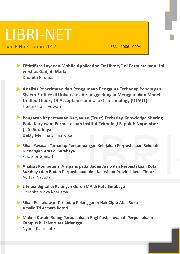Folia Medica Indonesiana
ISSN 0303-7932
Vol. 39 / No. 4 / Published : 2003-10
Order : 4, and page :216 - 222
Related with : Scholar Yahoo! Bing
Original Article :
The pattern of immunopathobiological response in oral mucosa to disclose the immunopathobiogenesis of candida albicans infection in patients with diabetes mellitus
Author :
- Harlina*1
- Department of Oral Pathology Hasanuddin University School of Dentistry Makassar
Abstract :
Candida albicans infection is often found in oral cavity of DM patients. However, the mechanism of immune response change resulted from the infection remains unclear. Information on factors and immune response change occurring in C. albicans infection remains rare, because in such condition the clinical manifestation has not been induced. C. albicans infection may develop to become candidiasis, a manifest infectious disease, and further it becomes pre-malignant candidal leukoplakia and malignant squamous cell carcinoma. C. albicans infection usually occurs locally, but it may disperse to visceral organs, leading to a fatality. C. albicans is a normal flora, while it is also an opportunistic pathogen because it may become a pathogen in immunocompromised condition. This may occur in DM patients since high blood glucose level will react non-enzymatically to protein, changing protein structure and function to become immunogen. This study was done to disclose the immunopathobiogenesis of oral C. albicans infection in patients with DM. Systemic and local immune response were compared between DM groups with high HbA1c level with and without C. albicans and non-DM with and without C. albicans. We found no difference between patients with high HbA1c level with C. albicans and those with high HbA1c level without C. albicans, and between patients with high HbA1c level with C. albicans and non-DM patients with C. albicans. Difference was found between patients with high HbA1c level without C. albicans and non-DM patients without C. albicans infection, and between non-DM patients with and without C. albicans infection. Local immune response also showed no difference in all groups. Three predominant discriminant variables were found in those groups, and these were described in an immunopathobiological pattern. Based on this pattern, it can be summarized that the role of Th1 produces IFN-γ, increases IgM switching to IgG, which is important to prevent the occurrence of C. albicans infection. Conclusively, immunopathobiological pattern can be used to disclose the immunopathobiogenesis of oral C. albicans infection in patients with DM.
Keyword :
immunopathobiogenesis, oral immune mucosa, C. albicans infection, Diabetes Mellitus,
References :
Cotran RS, Kumar V, Collins T,(1999) Pathologic Basis of Disease, 6th Ed Philadelphia : WB Saunders Company
Hill RB, Lavi MF,(1980) Principles of Pathobiology. 3rd edition Oxford : Oxford University Press
Archive Article
| Cover Media | Content |
|---|---|
 Volume : 39 / No. : 4 / Pub. : 2003-10 |
|













